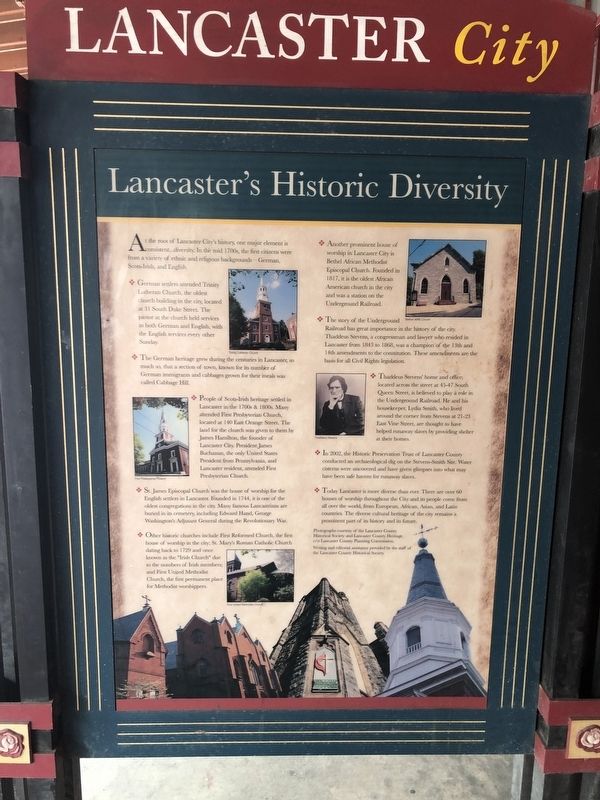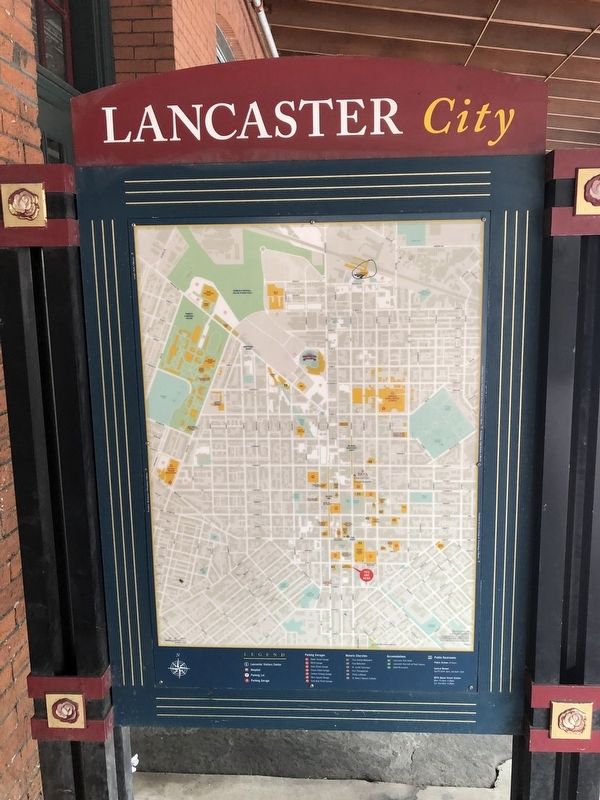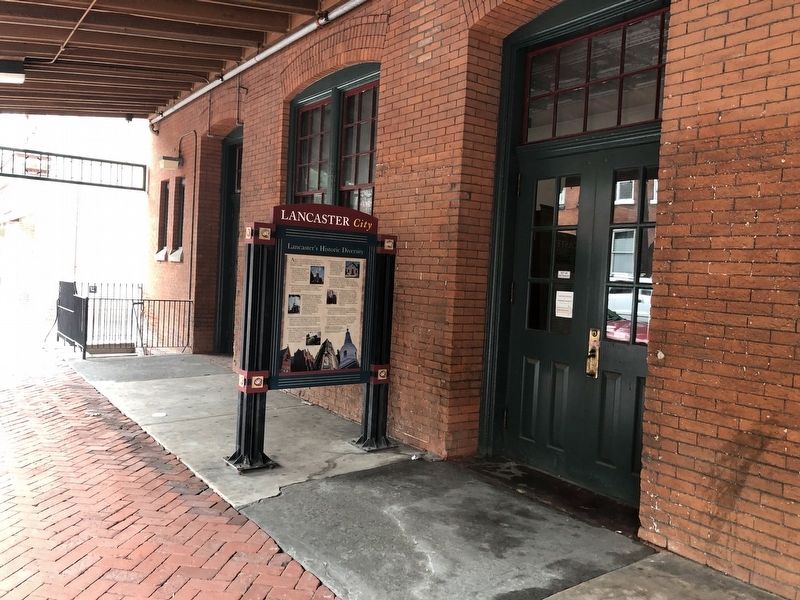Lancaster in Lancaster County, Pennsylvania — The American Northeast (Mid-Atlantic)
Lancaster's Historic Diversity
Lancaster City
At the root of Lancaster City's history, one major element is consistent...diversity. In the mid 1700s, the first citizens were from a variety of ethnic and religious backgrounds — German, Scots-Irish, and English.
❖ German settlers attended Trinity Lutheran Church, the oldest church building in the city, located at 31 South Duke Street. The pastor at the church held services in both German and English, with the English services every other Sunday.
❖ The German heritage grew during the centuries in Lancaster, so much so, that a section of town, known for its number of German immigrants and cabbages grown there for their meals was called Cabbage Hill.
❖ People of Scots-Irish heritage settled in Lancaster in the 1700s & 1800s. Many attended First Presbyterian Church, located at 140 East Orange Street. The land for the church was given to them by James Hamilton, the founder of Lancaster City. President James Buchanan, the only United States President from Pennsylvania, and Lancaster resident, attended First Presbyterian Church.
❖ St. James Episcopal Church was the house of worship for the English settlers in Lancaster. Founded in 1744, it is one of the oldest congregations in the city. Many famous Lancastrians are buried in its cemetery, including Edward Hand, George Washington's Adjutant General during the Revolutionary War.
❖ Other historic churches include First Reformed Church, the first house of worship in the city; St. Mary's Roman Catholic Church dating back to 1729 and once known as the "Irish Church" due to the numbers of Irish members; and First United Methodist Church, the the first permanent place for Methodist worshippers.
❖ Another prominent house of worship in Lancaster City is Bethel African Methodist Episcopal Church. Founded in 1817, it is the oldest African American church in the city and was a station on the Underground Railroad.
❖ The story of the Underground Railroad has great importance in the history of the city. Thaddeus Stevens, a congressman and lawyer who resided in Lancaster from 1843 to 1868, was a champion of the 13th and 14th amendments to the constitution. These amendments are the basis for all Civil Rights legislation.
❖ Thaddeus Stevens' home and office, located across the street at 45-47 South Queen Street, is believed to play a role in the Underground Railroad. He and his housekeeper, Lydia Smith, who lived around the corner from Stevens at 21-23 East Vine Street, are thought to have helped runaway slaves by providing shelter at their homes.
❖ In 2002, the Historic Preservation Trust of Lancaster County conducted
❖ Today Lancaster is more diverse than ever. There are over 60 houses of worship throughout the City and its people come from all over the world, from European, African, Asian, and Latin countries. The diverse cultural heritage of the city remains a prominent part of its history and its future.
Erected by Lancaster County Historical Society.
Topics and series. This historical marker is listed in these topic lists: Abolition & Underground RR • African Americans • Churches & Religion • Colonial Era • Settlements & Settlers. In addition, it is included in the African Methodist Episcopal (AME) Church, and the Former U.S. Presidents: #15 James Buchanan series lists. A significant historical year for this entry is 1744.
Location. 40° 2.168′ N, 76° 18.325′ W. Marker is in Lancaster, Pennsylvania, in Lancaster County. Marker is on South Queen Street (Pennsylvania Route 72) south of West Vine Street, on the left when traveling north. Touch for map. Marker is at or near this postal address: 113 South Queen Street, Lancaster PA 17603, United States of America. Touch for directions.
Other nearby markers. At least 8 other markers are within walking distance of this marker. Thaddeus Stevens (within shouting distance of this marker); Montgomery House
Additional keywords. LGBT, LGBTQ
Credits. This page was last revised on April 1, 2020. It was originally submitted on July 9, 2019, by Devry Becker Jones of Washington, District of Columbia. This page has been viewed 237 times since then and 37 times this year. Photos: 1, 2, 3. submitted on July 9, 2019, by Devry Becker Jones of Washington, District of Columbia.


